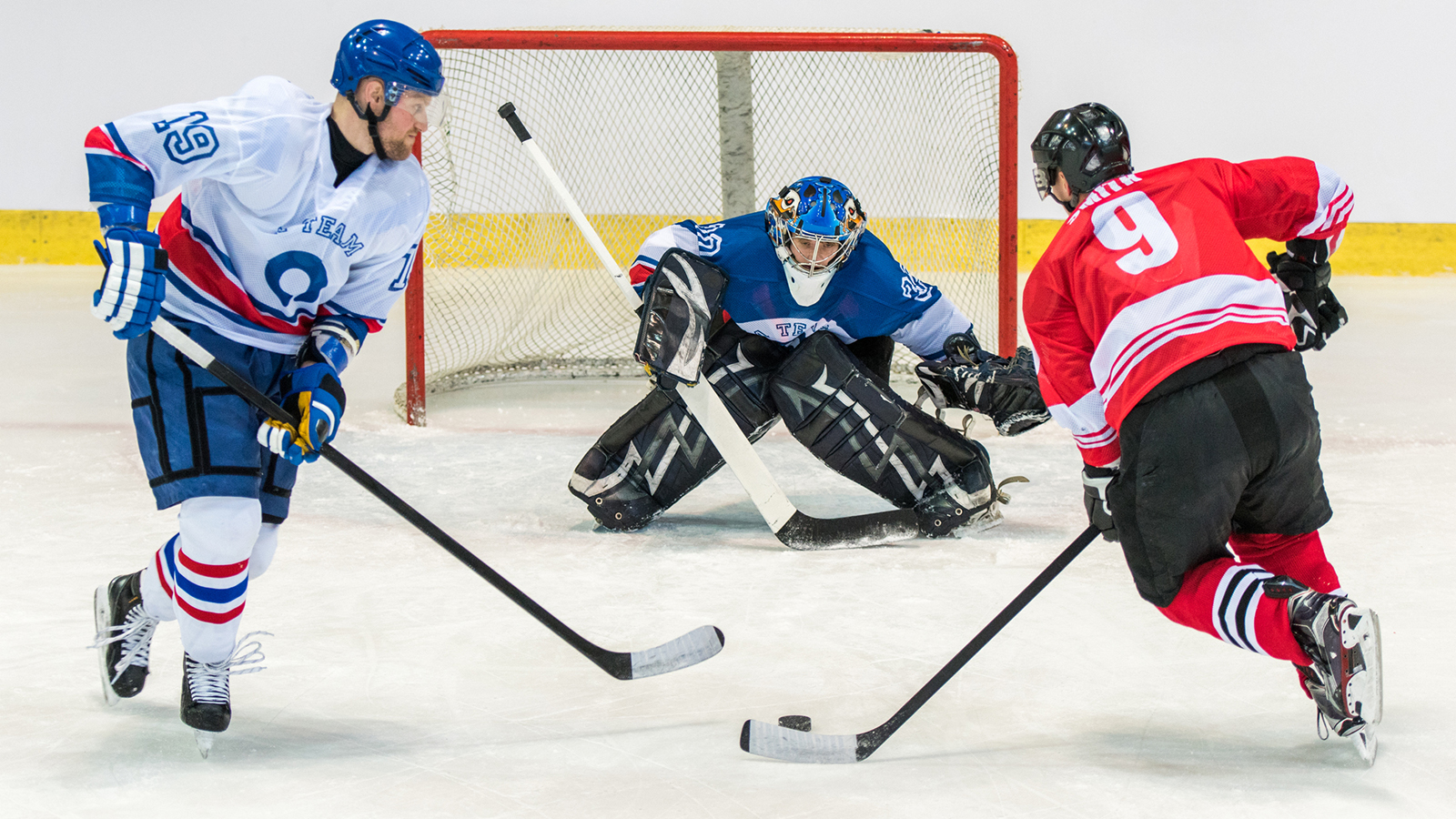If you have been struggling to get your shot feeling right, there may be a reason. Information on the internet is split between coaches who teach shooting technique that was useful with the old wooden sticks, and new coaches who understand how to shoot with the technology in sticks today. With today’s sticks, it is more possible than ever to have a wicked snapshot, wrist shot or slapshot. But if you don’t know the new science of proper shooting form for hockey, you might be left in the dark. So let’s take a look at it.
First Secret: Stick Flex
You might be missing out on the full potential of your shot if you aren’t making use of your stick flex. Today’s sticks are built to flex and whip the puck. Imagine a bow and arrow where the puck is released from the end of the bow instead of the arrow being released in the middle. The best way to create this whip effect is to pull the puck in with the toe of your stick while leaning on your stick to generate the torque necessary to create the bow-and-arrow effect.
The wrist shot, snapshot and slapshot all use stick flex. The backhand is the only shot that does not use it.
Second Secret: How Hockey Is Like Tennis
Old coaches taught only one stance to shoot the puck. Today’s coaches understand that players must adjust their stance depending on the situation. Much like tennis players have both an open-stance and closed-stance forehand, hockey players can shoot from an open stance or a closed stance. An open-stance shot is generally shot on one leg, the one closest to the puck. A closed-stance shot is generally shot on two legs and involves a weight transfer.
No stance is right or wrong. Closed stance allows you to generate more power, while open stance allows for a quicker release. Open-stance shots tend to be classified as snapshots, and closed-stance shots tend to be classified as wrist shots. Backhand shots are almost always shot with two feet on the ice. Otherwise, it is simply too hard to generate any power whatsoever.
Third Secret: Sequence Your Way to Shot Power
If you think you’re doing everything right but just don’t feel a “connection” during your shots, this secret is likely the most important for you. This is not new, but it does require clarification.
In a classic wrist shot from a closed stance, the player-generated power from the legs, shifted his or her weight from the back to the front leg, twisted the hips, felt tension through the core, turned the shoulders, moved the arms toward the net, and then rolled the wrists over. This is still true, but today’s players must lean on and flex their stick while generating power with their legs and twisting through their hips. Today’s players also use the open-stance snapshot. This does not have a weight transfer, but the player must still follow the sequence of generating power from the ground while putting torque on the stick, twisting through the hips, feeling tension through the core, moving the shoulders and arms, then the wrists. The backhand must also respect the sequence but, as mentioned above, does not use stick flex.
Players who are trying really hard to shoot the puck but aren’t getting any power are probably using too much of their arms, or they have too much upper-body lean and don’t feel the transfer of tension through their hips and core from their legs. Study the sequence of baseball players and golfers to help you get the idea. Better yet, practice those sports too!
Fourth Secret: Basic “Operating System”
Isn’t it fascinating that sometimes ignoring a coach can make you better? Sometimes, a coach gives you well-meaning advice that simply doesn’t work for you. So although I am giving you general guidelines, you should experiment with how moving your body in different ways feels. Usually, you should have a slight knee bend, your butt should be back, and your torso should have a slight forward angle. Your hands should be able to move freely so you don’t have to lean your torso too much. These are the basics, but you need to feel the movement yourself.
Original Article Posted on stack.com


